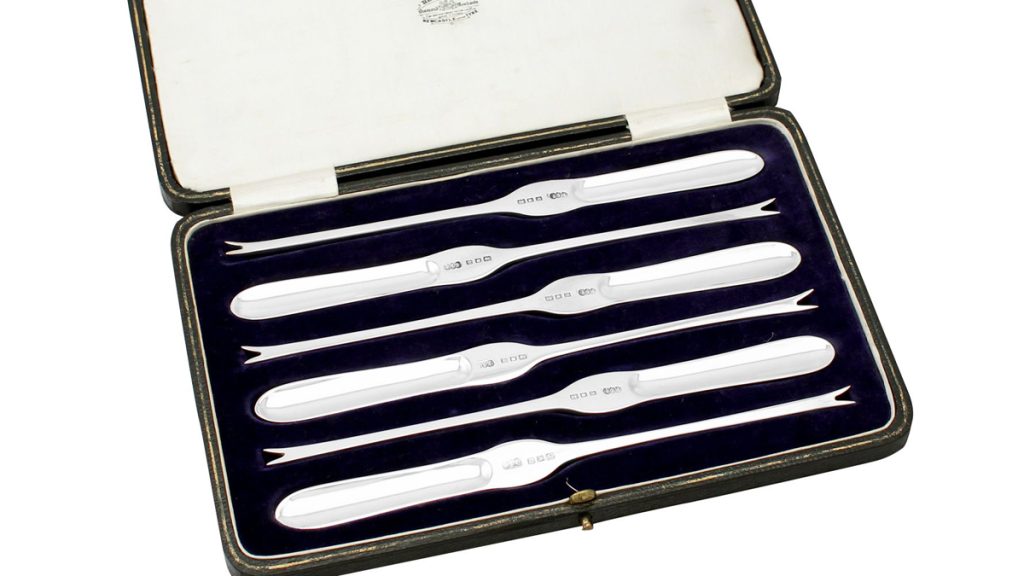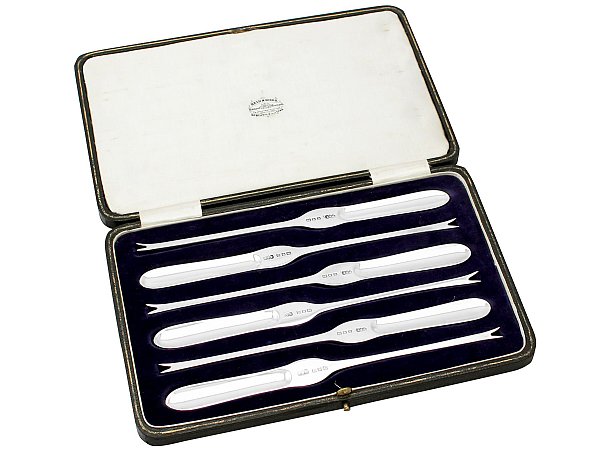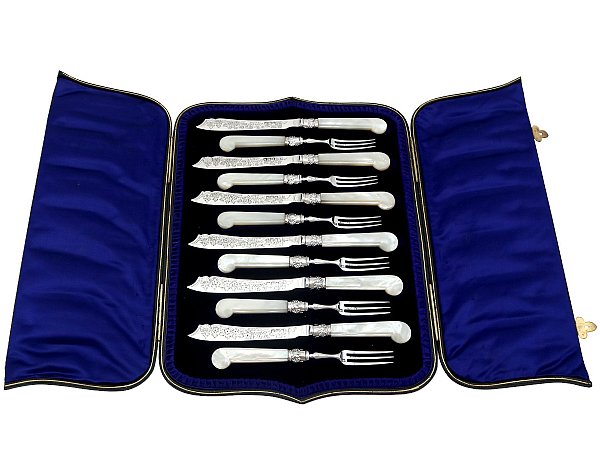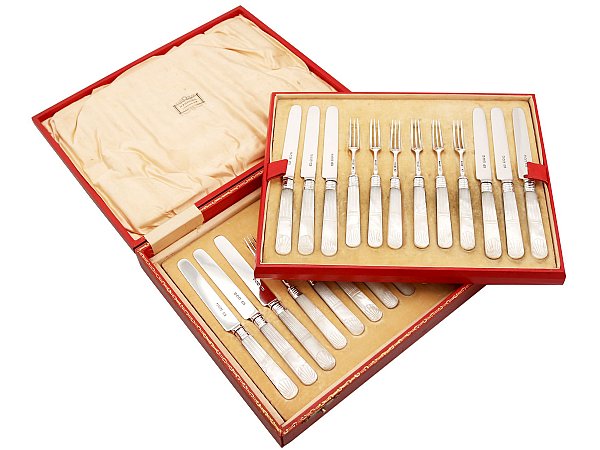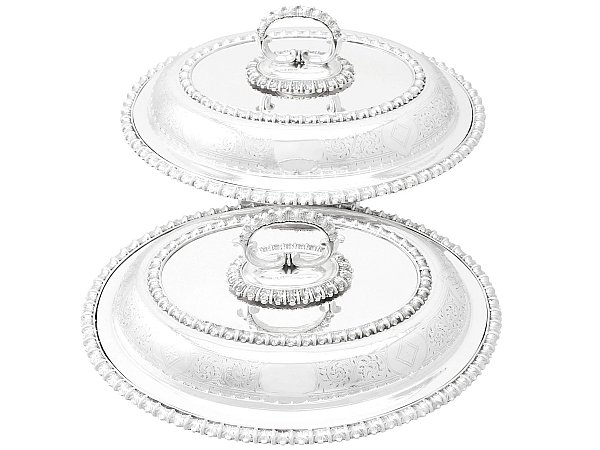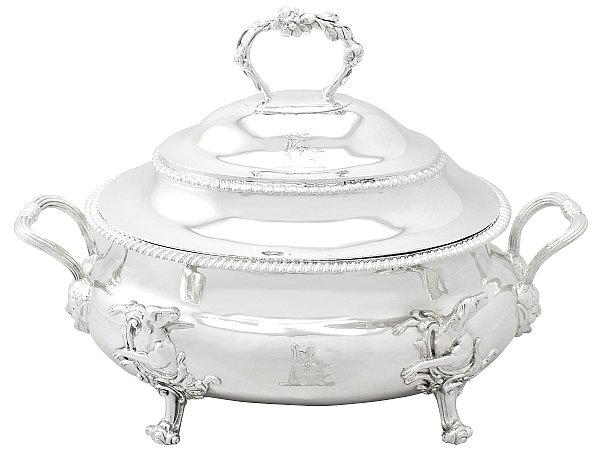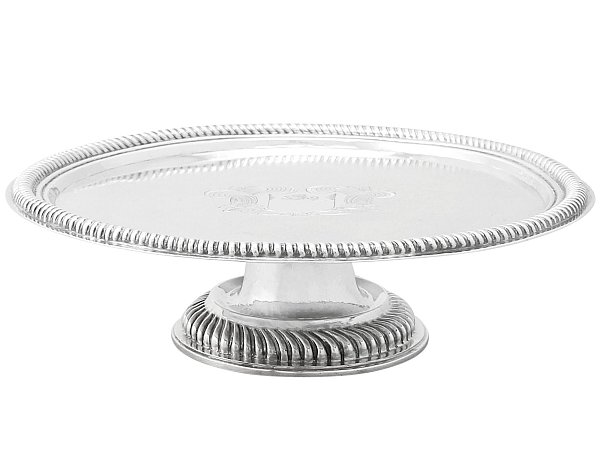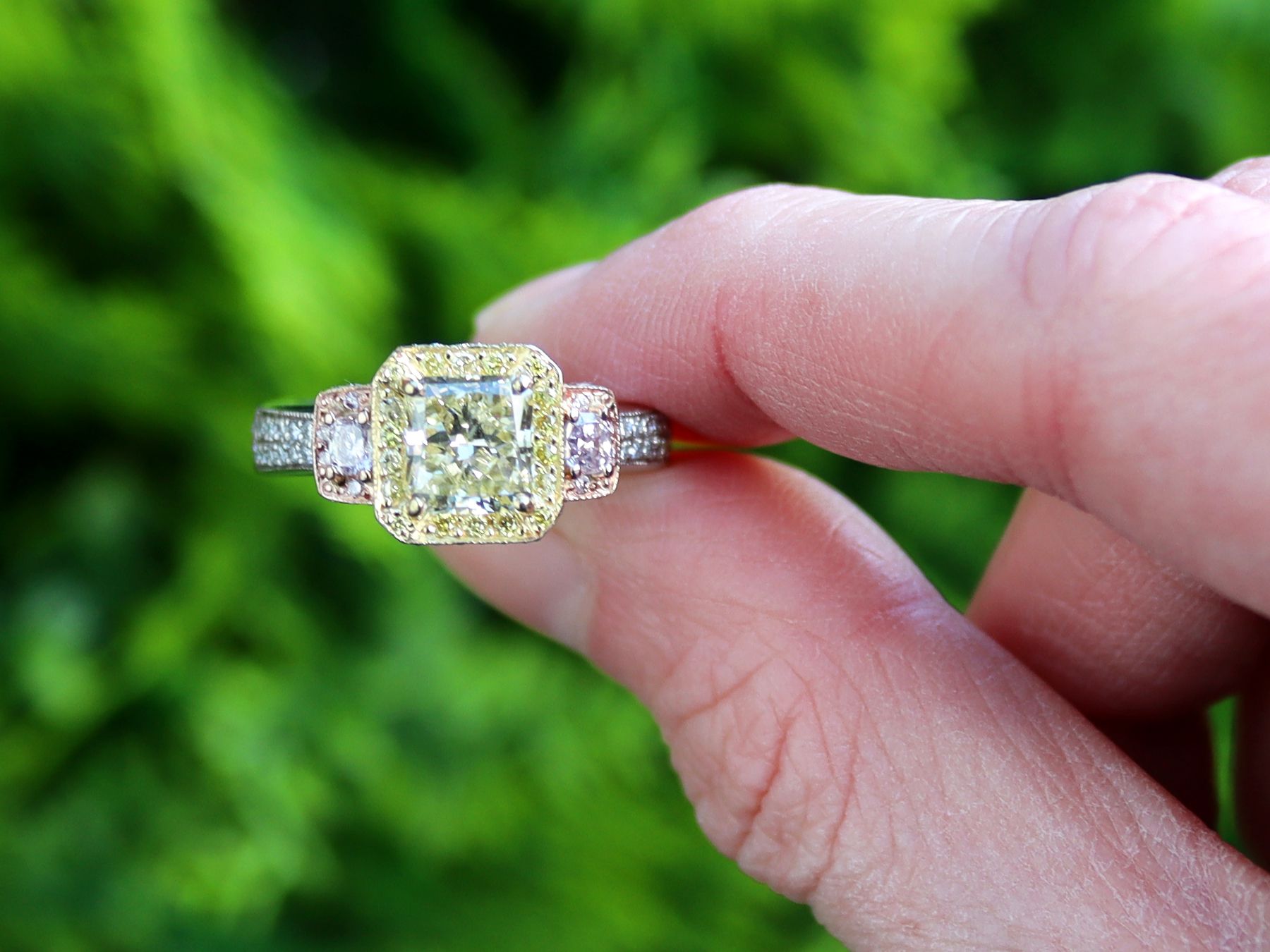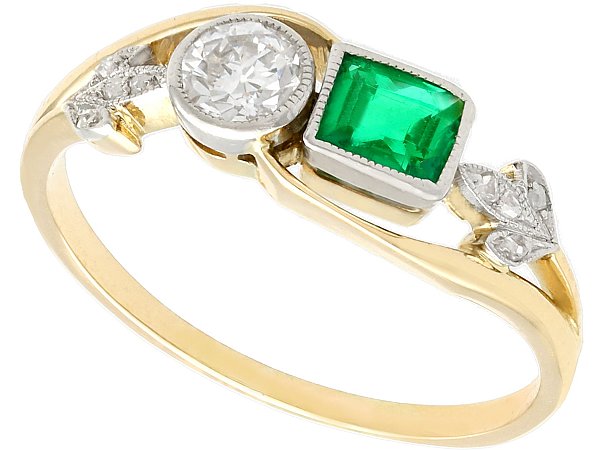Antiques enthusiasts and history buffs can all agree that the Victorian era is fascinating. Ending just over a century ago, the various social and cultural differences that have changed in that time is fascinating. Known for adding pageantry and decorum to just about all occasions, Victorians are thought of as deeply formal, regimented people.
Although it’s well-documented that Victorians were capable of being just as improper and lewd as anyone else, today we’re focussing on their refined side. Dining in the Victorian era was a well-orchestrated affair, with a seemingly endless list of dishes and accoutrements involved.
How to Set a Victorian Dinner Table
The importance of silverware to a Victorian dining set-up cannot be overstated. Hosting friends for an elaborate dinner party was an ideal way for women in particular to show off their domestic assets. In a time with a growing middle class, dinner parties represented an opportunity for social advancement. If you could impress your guests with an intricate arrangement of silverware as well as some sparkling conversation, you were sure to be the talk of the town.
Each place setting for a Victorian diner could feature up to eight sets of silver knives and forks, all dependent on the course being served. Water goblets were also a staple, with a silver jug of water on the table for sharing. If fish was being served, additional pieces were needed. Smaller, more delicate, fish knives and forks would be placed to the far right of the plate beside the knives. This is also where soup spoons or oyster forks and lobster picks would be placed if they were needed.
Larger pieces of cutlery intended for serving guests would be towards the centre of the table. This could include: meat skewers, ladles, fish slices, tongs, and a host of different knives, forks, and spoons. Then there’s the dishes themselves to consider. Tureens for soups or curries were popular. Potato dishes, hors d’oeuvre dishes, and bread dishes also heavily featured in Victorian fine dining. Platters, trays, and salvers served up meats and side dishes of all sorts along the centre of the table.
With all this eating, it was also essential to slake one’s thirst. Each guest at a Victorian dinner party would have the aforementioned water goblet at their serving. They would also, however, require libations of other kinds. Sherry, wine, or champagne were all popular choices among the emerging middle class. Each beverage required its own vehicle, and so champagne flutes, wine goblets, sherry glasses, and other silver drinking vessels were frequently used depending on the drinks being served.
Lastly, desert much also of course be considered. For this, tazzas and cake stands are placed around the table. In addition, smaller items like strawberry dishes, bon bon dishes, and silver baskets are used to hold candies and fruits. Victorians liked to serve coffee after meals, and so a silver coffee pot with cream jugs, caddy spoons, sugar casters and sugar bowls wouldn’t go amiss.
With the table setting this elaborate, it’s no surprise that the conduct of the guests is equally important. Some of these rules may seem familiar, still considered polite today. Others, however, may surprise you.
What were the Rules for Dinner During the Victorian Era?
A lot of etiquette rules for the Victorian dinner table are common sense. Don’t eat with your mouth full, for example, and avoid soiling the table cloth if at all possible. A more niche example of appropriate decorum is to remove one’s gloves before eating. This tip is targeted towards ladies, who often wore evening gloves past the elbow. Eating with gloves on was not proper. Equally, wiping one’s hands or mouth without using the provided napkin was also frowned-upon. Any food around the mouth must also be wiped off with a napkin as soon as possible.
Other typical rules of engagement for proper dining include avoiding blowing one’s nose, sneezing, coughing, or picking teeth at the table. The politest course of action is to excuse oneself in order to deal with the problem elsewhere. It is also, however, rude to leave the table with food still in the mouth, so bear that in mind.
Something all together peculiar about Victorian dinner etiquette is the rules of conversation. For one thing, it was entirely unacceptable to discuss the food presented in any way. While today, every dinner party revolves heavily around discussing how delicious the food is and celebrating the host for their efforts, Victorians would balk at the concept. Equally, conversation was strictly chit-chat. In-depth topics that could be divisive in any way were to be avoided at all costs. This may stand out to those of us who become embroiled in intense debate with our relatives every Christmas as tradition.
There are yet more bizarre aspects to polite conduct at Victorian dinners. For example, one must never hesitate in taking the last of any item on the table. Today, the question of who wants the last slice of pie goes around the table to avoid appearing greedy. To Victorians, however, hesitating to take the last piece would suggest that you doubt the host’s abilities to replenish what has been presented. Taking the last piece, however, shows that you have total confidence that the host could have an infinite number of pies available to their guests.
The state of your plate at the end of the meal is also crucial. While lots of people in the UK today grew up believing that a clean plate was a sign of your gratitude, Victorians were different. In the 19th century, clearing your plate implied that you were not yet full, once again casting doubt on the host’s capabilities. Instead, leaving some food, including leaving some meat on any bones, showed that you had been sufficiently stuffed.
Some staples like keeping elbows off the table and sitting in a polite way have sustained the century between Victorians and ourselves. Thankfully, however, some of these more unique features of eating with friends have been abandoned for their over-formality and wastefulness. There is certainly something romantic about this era, however. Perhaps the strict codes of conduct for ladies and gentlemen are what make some of us pine for a distant time.
What were Victorian Era Gentleman’s Manners and Etiquettes?
Victorians were far lewder and more lascivious than we give them credit for, but they were also strict about their manners. Once again, some of these guidelines would be adhered to today by anyone with enough common sense. Responding to an invitation at the earliest opportunity and showing up promptly on time are all expected of people throughout time. For the gentlemen, however, there are more specific requirements for proper dining.
Guests would be sat in the parlour before dining. Upon the host’s invitation, the gentlemen in the parlour can begin to guide the ladies through to the dining room. Each gentleman was tasked with escorting a lady, offering their arm to her. Gentlemen were also expected to enter the room first, leading the lady just behind them. The ladies are also to be seated before any of the gentlemen are allowed to sit.
Once everyone is sat, the placement of one’s napkin is also to be considered. Wearing a napkin about the shirt collar was considered childish and uncouth. Instead, having the napkin close at hand either on the table or across the flat of one’s leg is acceptable. Sitting up straight and avoiding leaning over the plate is also proper. Rather than stooping to the table to eat, a real gentleman brings his fork or spoon perpendicular to his mouth. The same goes with drinks – raising the butt of your glass to the ceiling is entirely uncouth. Equally, when wiping your mouth with a napkin – as doing so with your hands would be unthinkable – you should only draw the napkin neatly across your lips. Wiping your face or beard with the napkin is undesirable and rude to the other guests.
Whilst conversing at the table, it’s important to keep one’s voice low so as to avoid talking over other guests. Equally, gesticulation is to be kept to an absolute minimum. Nothing could ruin an evening like jostling the guest beside you and causing them to spill or spoil. It’s also essential to remember that the lady seated next to you is the one upon whom you should focus. Should she require anything or wish to speak with you, it is your paramount task to aid her and pay due attention to her.
A subtle rule for ladies and gentlemen alike is to consider the temperature of your food. Although blowing on your food today is entirely ordinary, Victorians disagreed. If your food was too hot, you simply had to wait until it had cooled enough to consume. Blowing on your food was distasteful, making you look rather piggish for not being willing to wait.
The minefield of behaving properly at a Victorian dinner party does seem to take some of the fun out the occasion. It’s easy for us to look back and consider them too up-tight and rigid in the way they act. Some of us are definitely grateful for the more casual direction social gatherings have taken in the last hundred years. If you were transported back to the 1800s for a dinner party, how rude would you be by simply acting ‘normal’?
What is Considered Rude at the Victorian Dinner Table?
One rule that would be hard to remember to follow for the time-travelling dinner guest is to wipe your mouth before each sip of your drink. Before lifting your glass, bring your napkin to your mouth and cleanly wipe it. Supposedly, greasing your glass with unwiped lips was entirely ill-bred. It’s safe to say, not many of us would think of this today, and we would be appropriately shunned.
When talking with others at the table, it was considered bad taste to portray oneself with an air of mystery. Clear and plain talking was the only mode of address to Victorians when dining. This is a less obvious rule to consider, and it would seem all too easy to accidentally fall into being ‘too mysterious’. The concept of being mysterious seems entirely too subjective, and so this is a difficult area to navigate properly.
A key point of etiquette that more fidgety feasters will struggle with is sitting still. Idly playing with napkin rings, cutlery, or clothing was considered rude. It seemed to suppose that you were not truly interested in the conversation, or perhaps that you were not mature enough to behave as a ‘proper’ adult. While today we consider this type of behaviour to be harmless and even unavoidable for people with ADHD and the like, Victorians were somewhat less understanding. Instead, when your hands are unoccupied with eating or drinking, it is proper for them to be kept under the table, out of sight and mind.
When the eating is ended, well-behaved guests do not stand from the table until the host indicates that it’s time. At this point, the polite thing to do is to leave your napkin unfolded at your setting. We might find this strange, thinking that neatly folding the napkin is more considerate. To Victorians, however, this was presumptuous. Only household members could fold their napkins, indicating that they will be using the same napkin again in the future. To fold your napkin as a guest suggested that you would expect the same degree of treatment as a family member.
Perhaps the hardest rule of all to follow was this: try not to be too perfect. Nobody likes a try-hard, even in Victorian times with such rigid social codes of conduct. It is much preferred to make some small mistakes rather than be obviously trying very hard to be perfect. Today, there are far fewer rules to follow. Don’t chew loudly. Don’t speak with your mouth full. Just generally be polite and personable. Victorians, however, expected a lot more of their guests. Striking the balance between behaving appropriately and not appearing to be exerting too much effort seems impossible. Although it’s likely that we would struggle if thrown back into this time, the Victorians themselves navigated it with ease.
If you’re thinking of hosting an elaborate dinner party in the near future, perhaps leave the Victorian etiquette out of the picture. Their table settings were truly fantastic, and ought to be imitated. Everything else, however, is probably best left in the past. Would you struggle to blend at a Victorian dinner party?

